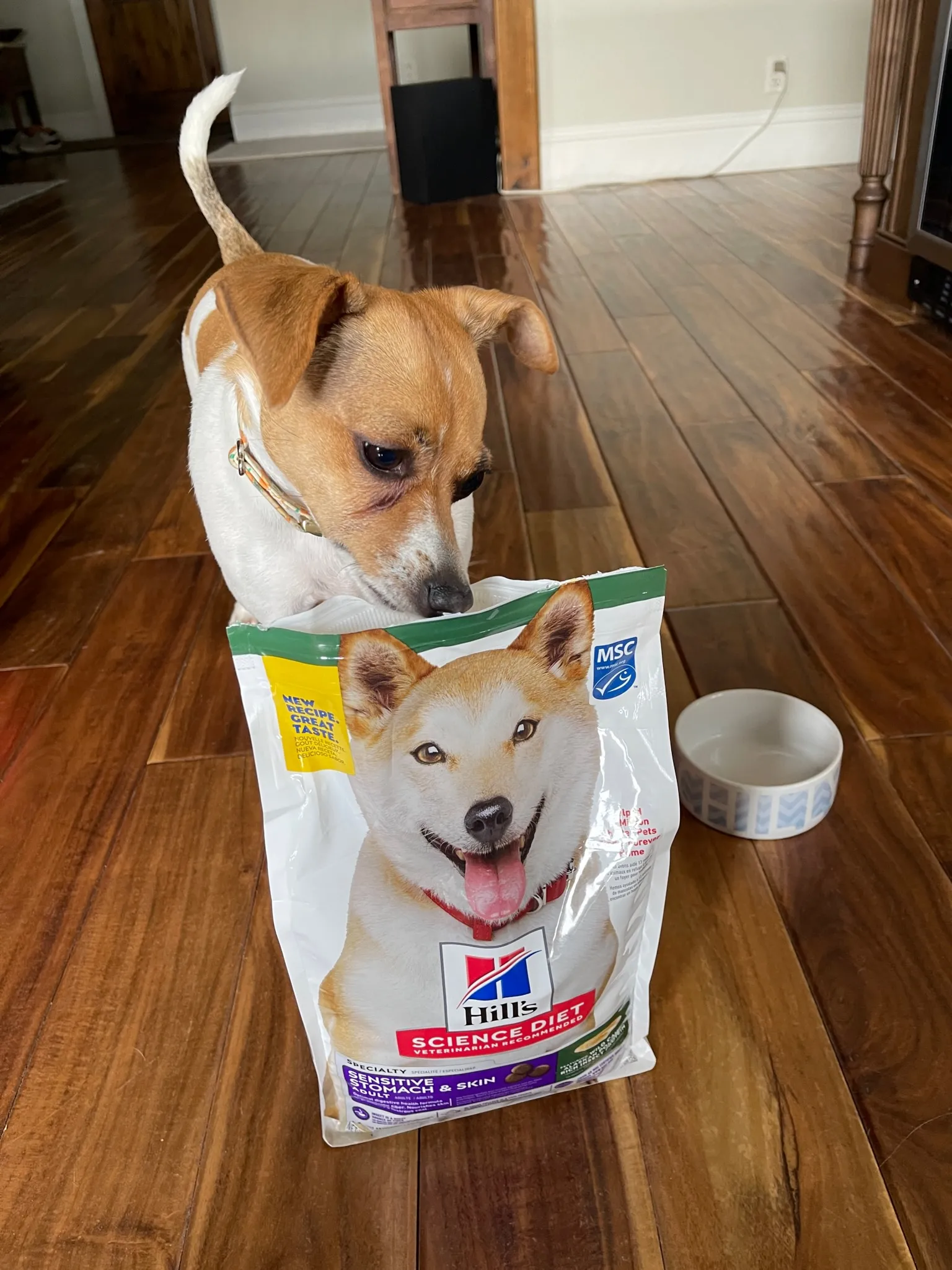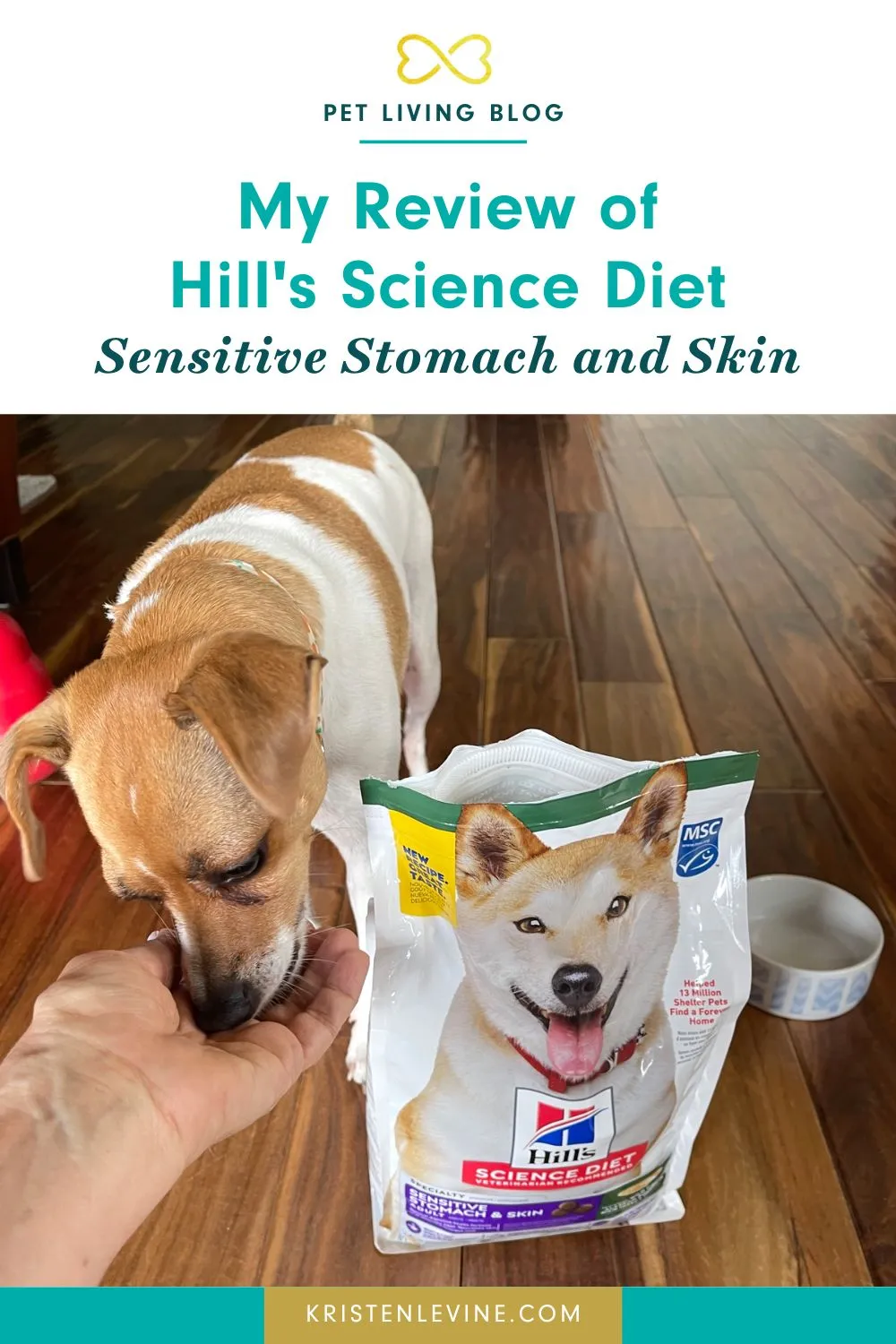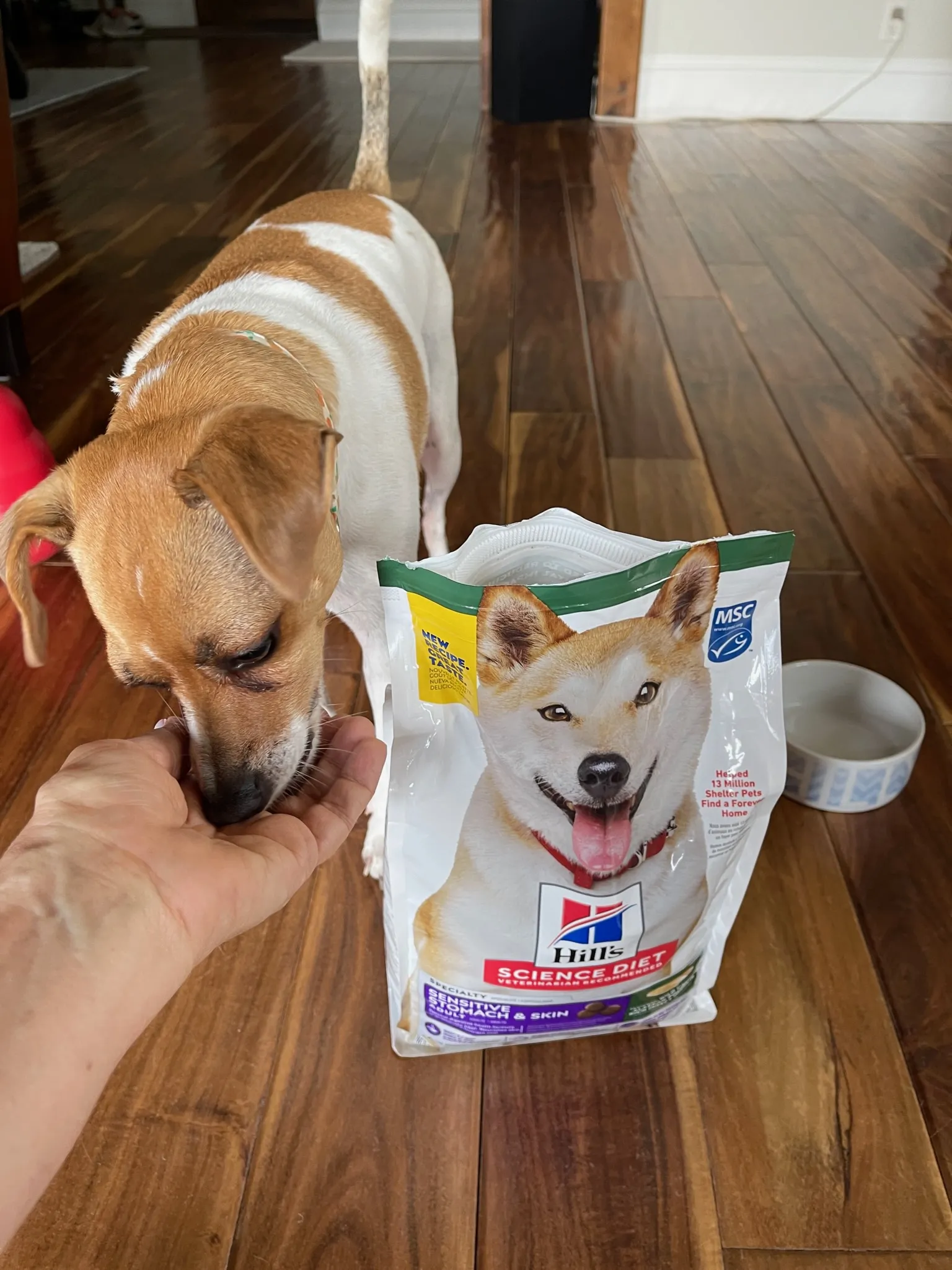Choosing the right dog food can be challenging, especially for pups with sensitive stomachs. If your furry friend struggles with tummy troubles, digestive upset, or skin issues, finding a reliable option like Hill’s Science Diet Sensitive Stomach & Skin is crucial. This formula promises gentle nutrition backed by science, and in our household, it delivered results without any backlash.
We’ve tested countless sensitive stomach dog foods over the years, and this one stands out for its innovative ingredients. My dog Tulip, who has a finicky gut, took to it immediately. Curious about alternatives? Check out this diamond premium dog food review for more options tailored to picky eaters.
 Tulip checks out the new dog food from Hill
Tulip checks out the new dog food from Hill
Is Hill’s Science Diet a Good Brand for Dogs?
Hill’s Pet Nutrition has earned trust over 75 years by pioneering science-based pet food. Their team includes veterinarians, PhD nutritionists, and food scientists, ensuring every recipe undergoes rigorous testing. Often recommended by vets and available at clinics, Hill’s blends research with real-world results.
The Sensitive Stomach & Skin formula isn’t prescription-only; it’s an accessible choice for dogs with mild sensitivities, not severe medical conditions. Always consult your vet for diagnosed issues to get personalized advice.
What sets this kibble apart? It features sustainable proteins like wild-caught Alaskan Pollock from MSC-certified fisheries and locally raised insect meal. Insect protein isn’t novel—it’s a sustainable powerhouse we’ve used in treats for years with great success.
 My Review of Hills Science Diet Sensitive Stomach and Skin
My Review of Hills Science Diet Sensitive Stomach and Skin
Tulip’s Honest Take on Hill’s Science Diet Sensitive Stomach & Skin
Tulip devoured this food from day one, and crucially, her stomach handled it perfectly—no gas, no loose stools, no reactions. The savory fish flavor hooked her instantly, creating what seemed like a lasting “food memory.”
If a dog rejects food, even the healthiest option fails. Tulip’s enthusiastic approval? Two paws up for palatability.
As her owner, I appreciated the deeper benefits too, but her tail-wagging endorsement sealed the deal.
 Hill
Hill
Breaking Down the “Proteins with a Purpose”
Hill’s emphasizes sustainability without sacrificing nutrition. Key proteins include:
Wild-Caught Alaskan Pollock: Sourced responsibly from healthy stocks, it minimizes ecosystem impact. Rich in Vitamin E and Omega-6 fatty acids, it supports shiny coats and healthy skin.
Rich Insect Protein: Raised in North America, it’s fiber-packed, nutrient-dense, and eco-friendly. Insects require far less land and water than traditional meats.
Research underscores the environmental angle. A study in BioScience notes an average dog diet contributes up to 770 kg of CO2 emissions yearly. UCLA researchers estimate pets account for 30% of U.S. meat consumption’s environmental toll. Hill’s counters this with low-impact choices, letting you nourish your dog while protecting the planet.
Grains are selected for reduced carbon pawprint, enhancing digestibility for sensitive tummies.
For comparison, brands like Royal Canin dog food also prioritize science, but Hill’s sustainability edge shines here.
Key Health Benefits for Sensitive Dogs
Beyond eco-friendliness, this formula packs antioxidants like Vitamins C and E to bolster immunity, fighting inflammation linked to gut and skin woes. High digestibility means better nutrient absorption, ideal for pups prone to upset.
Tulip’s smoother coat and steady energy levels were noticeable within weeks. We polled Facebook followers for real-user insights:
 Facebook review of Hill
Facebook review of Hill Facebook review of Hill
Facebook review of Hill Facebook review of Hill
Facebook review of Hill Facebook review of Hill
Facebook review of Hill
Many reported firmer stools, less itching, and happier pets—echoing veterinary endorsements for prebiotic fibers and balanced nutrition.
If organic appeals, explore Purina Beyond organic dog food reviews for similar wholesome vibes.
 Tulip nibbles on Hill
Tulip nibbles on Hill
Transitioning to New Dog Food Safely
Switching foods risks GI upset like vomiting or diarrhea, especially for sensitive dogs. Don’t go cold turkey—gradual is key.
Follow this vet-recommended plan:
Days 1-2: 25% new food, 75% old.
Days 3-4: 50/50 mix.
Days 5-6: 75% new, 25% old.
Day 7+: 100% Hill’s.
Monitor closely; extend if needed. Tulip transitioned seamlessly, maintaining her routine without hiccups.
For weight-conscious pups, Purina Pro Plan weight management dog food reviews offer transition tips too.
Final Verdict on Hill’s Science Diet Sensitive Stomach & Skin
Hill’s Science Diet Sensitive Stomach & Skin earns rave reviews in our home—eco-conscious, tummy-friendly, and irresistibly tasty. Tulip thrives on its purposeful proteins, and we love the sustainable story.
Prioritize your dog’s health with science-backed choices. Consult your vet, transition slowly, and watch for improvements.
Ready for more? Dive into our 4Health wet dog food reviews for complementary insights.
References
- Hill’s Pet Nutrition official site: Science Diet Sensitive Stomach & Skin
- BioScience study on pet diet emissions: academic.oup.com/bioscience/article/69/6/467/5486563
- UCLA pet environmental impact: ioes.ucla.edu/article/truth-cats-dogs-environmental-impact
- American Veterinary Medical Association guidelines on pet nutrition transitions.
